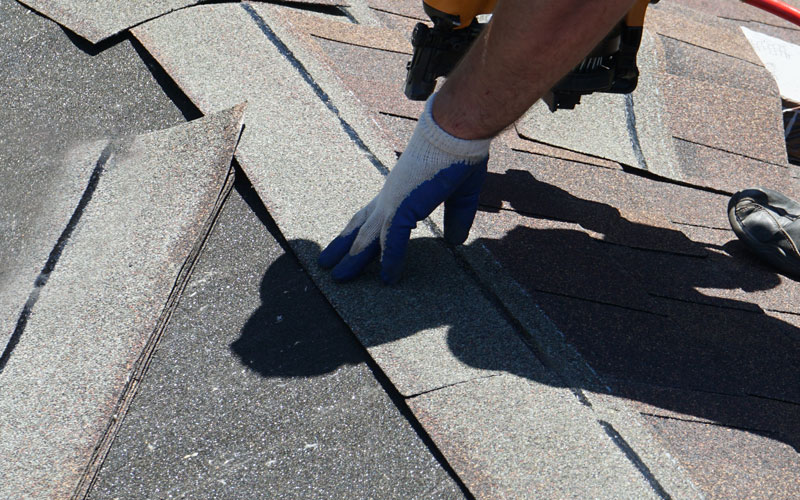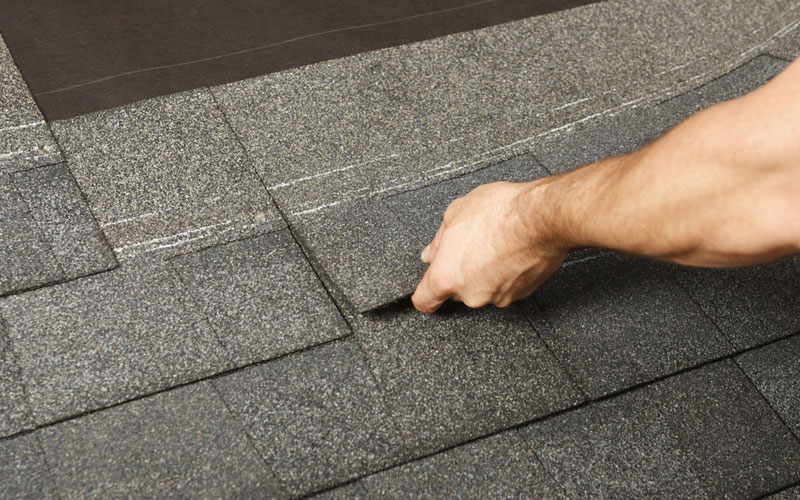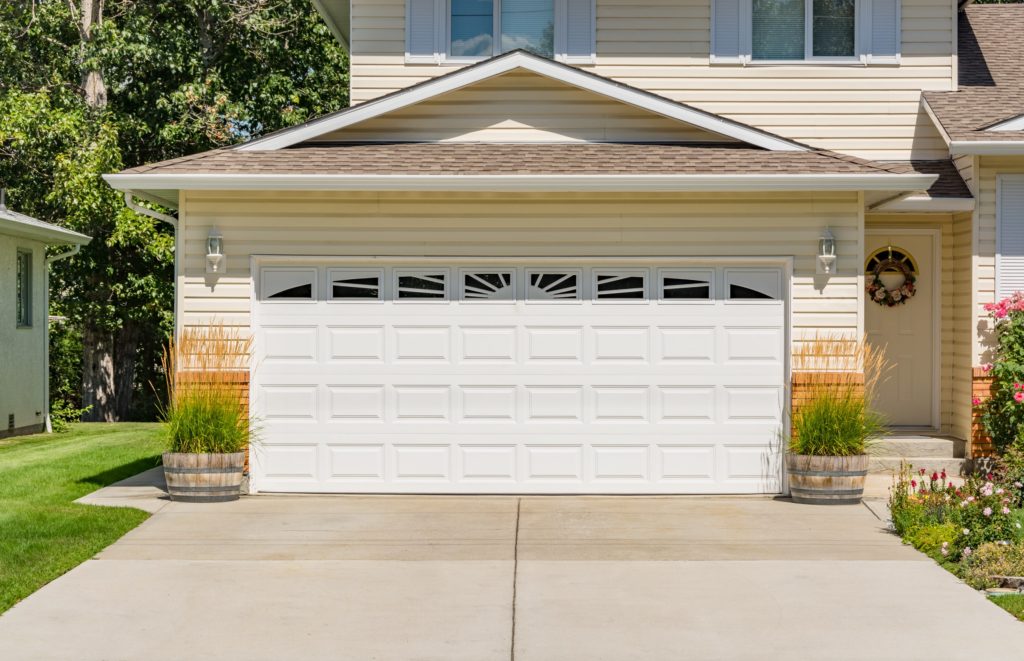Troubleshooting Roof Leaking Problem: What Every Homeowner Should Know
As a homeowner, it’s essential to be informed and prepared for potential problems that could arise on your property. One of the most common issues faced by homeowners is roof leaks which can cause significant damage if not addressed in a timely fashion. However, with the right knowledge and skill set, troubleshooting roof leaks doesn’t have to be a daunting task. In this blog post, we’ll explore what every homeowner should know about troubleshooting roof leaks – from recognizing signs of a roof leaking to finding the source of the leak quickly and effectively.
Identifying the Source of the Leak – How to Identify Common Causes of Roof Leaks
The process of identifying the source of a roof leak begins with understanding the common causes. Often, roof leaks can be attributed to issues such as damaged or missing shingles, cracked flashing, or improper seals around roof fixtures like chimneys or vent pipes.
- Damaged or Missing Shingles: Shingles serve as the outer layer of protection for your roof. Substantial wind, hail, or just natural degradation over time can lead to shingle damage or loss, making these areas vulnerable to leaks.
- Cracked Flashing: Flashing are thin strips of metal installed at danger points for leaks on your roof – for instance, where the roof meets the walls. Over time, the tar used to seal this flashing can corrode, leading to cracks.
- Improper Seals Around Roof Fixtures: Roof fixtures, such as chimneys, skylights, and vent pipes, are common places for leaks. This is often due to the seals around these fixtures degrading or being improperly installed in the first place.
- Age of Roof Materials: Over time, all roof materials will begin to degrade and lose their effectiveness. This aging process can make your roof more susceptible to leaks.
By keeping a close eye on these areas, you can identify and address potential problems before they result in substantial water damage.
Inspecting Your Roof – Tips for Spotting Problems Before They Become Serious
Regularly inspecting your roof can help catch minor issues before they turn into major ones. Here are some tips to help you spot problems early:
- Look for Visible Signs of Damage: Start by looking for obvious signs of damage like missing, curling, or cracked shingles. Also, check for broken or missing flashing, particularly around roof vents, chimneys, and skylights.
- Check the Attic: Often, signs of roof leaks first present themselves in the attic. Look for signs of water damage, such as dark spots, mold, or damp insulation.
- Gutter Inspection: Check your gutters to ensure they are not clouded with leaves, twigs, or other debris. Blocked gutters can cause water to overflow back onto your roof, leading to potential leaks.
- Use Binoculars: If climbing onto your roof isn’t an option, a pair of binoculars can be a great tool for spotting roof damage from the ground.
- Professional Inspection: If you’re unsure about inspecting the roof yourself or if you can’t safely access your roof, consider hiring a professional. They’ll have the knowledge and experience to spot potential issues and provide advice on how to rectify them.
By keeping these tips in mind, you can help prolong the lifespan of your roof and save money in the long run.

Roof Leakage Problem
Understanding Types of Roofing Materials and Their Advantages and Disadvantages
Understanding the different types of roofing materials and their respective advantages and disadvantages is crucial in making an informed decision about what’s best for your home.
- Asphalt Shingles: This popular roofing material is affordable and easy to install. However, it does not last as long as some other materials, typically needing replacement after 15-30 years.
- Metal Roofing: Metal roofs are durable and resistant to extreme weather conditions. They can last up to 50 years, but they are more expensive to install and can be noisy during rainstorms.
- Wood Shingles and Shakes: These offer a natural and aesthetically pleasing roof option. However, they require more maintenance and have a shorter lifespan than some alternatives. They also carry a higher fire risk.
- Slate Roofing: Slate roofs are extremely durable, lasting up to 100 years. They are, however, one of the most expensive roofing options and require a strong supporting structure due to their weight.
- Tile Roofs: Often made from clay or concrete, tile roofs are durable and energy efficient, but they are heavy and may require additional structural support.
- Flat Roofs: Flat roofs are simple and inexpensive to install and provide additional outdoor space. However, they require more frequent maintenance and are not suitable for areas with heavy rainfall.
By understanding these materials and their pros and cons, you can choose the best roofing material for your home, considering factors such as weather conditions, budget, and aesthetic preferences.
Repairing Minor Leaks with DIY Solutions
Sometimes, minor roof leaks can be addressed with DIY solutions. Here are some methods you can consider:
- Use Roofing Cement: If you notice a small hole or crack, roofing cement can be a quick fix. Apply it to the affected area using a putty knife. However, this solution is temporary and a professional repair is recommended in the long run.
- Replace Damaged Shingles: If the leak is due to a damaged shingle, it can be replaced. Carefully remove the damaged shingle, apply roofing cement to the back of the replacement, and then secure it with roofing nails.
- Reseal Roof Fixtures: If the source of the leak is around roof fixtures, resealing might be the answer. Use a caulk gun to apply roof sealant around the edges of the fixture.
- Apply Leak Stopper Rubberized Roof Patch: This product can be applied to stop leaks in their tracks. It’s weatherproof and waterproof, making it an excellent short-term solution to a leaky roof.
- Use a Tarp: If a major storm is coming and you haven’t been able to fix the leak yet, consider using a tarp. Cover the affected area with a tarp and secure it with wood strips. This can help prevent further water damage until you can get the leak repaired.
Remember, these are temporary solutions. For a long-term fix, you should contact a professional roofer. Working on a roof can be dangerous, so always prioritize safety. Always consult a professional if you’re unsure about how to proceed.
When It’s Time to Call in a Professional Roofer
While minor roof leaks can be addressed with DIY solutions, there are times when it’s essential to call in a professional roofer.
- When Leaks Persist: If, despite your best efforts, the leaks persist, it’s time to call a professional. Persistent leaks might be a sign of more serious underlying issues that require an expert’s attention.
- When Damage is Extensive: If your roof has suffered significant damage, such as from a storm, it’s best to have a professional assess the extent of the damage and carry out the necessary repairs.
- When Dealing with Complex Roof Types: Certain types of roofs, such as tile or slate roofs, require specialized knowledge for repair. If you have such a roof, it’s advisable to hire a professional.
- When Installing a New Roof: If you’re considering replacing your old roof, a professional roofer will be able to guide you through the process, from choosing the best material to ensuring correct installation.
- Preventive Maintenance: Regular professional inspections and roof maintenance can help extend the life of your roof and prevent minor issues from escalating into serious problems.
Remember, while cost is a factor, the safety and longevity of your roof should be the top priority. So, when in doubt, don’t hesitate to call in a professional roofer.

Professional Roof Repair
Preventative Maintenance Tips for Keeping Your Roof Watertight
Regular maintenance is key to keeping your roof watertight and in good condition. Here are some preventative measures you can take:
- Regular Inspections: Conduct regular roof inspections, particularly after extreme weather conditions. Look out for signs of damage such as missing or damaged shingles, and any cracks or leaks.
- Clean Your Gutters: Keep your gutters clean and free of debris. Blocked gutters can cause water to overflow and damage your roof or walls.
- Trim Overhanging Branches: Trim any overhanging tree branches near your roof to prevent them from scraping the roof surface and causing damage.
- Check for Rust: If you have a metal roof, regular checks for rust are crucial. Immediate action can help prevent further damage.
- Re-caulk if Necessary: The sealant around roof fixtures may deteriorate over time. Re-caulking these areas can help maintain the watertight integrity of your roof.
- Ensure Proper Ventilation: Proper roof ventilation prevents moisture buildup, which can lead to damp, mold, and ultimately, roof damage.
- Prevent Ice Dam Formation: If you live in a cold, snowy area, prevent ice dams from forming on your roof. These can cause substantial water damage when they melt.
- Professional Roof Maintenance: In addition to these DIY tips, it’s always a good idea to schedule regular professional maintenance to ensure any potential issues are caught early.
By taking these preventative measures, you can help maintain the watertight integrity of your roof, prolong its lifespan, and potentially save significant repair costs in the long run.
Tips for Finding the Right Roofing Company
Finding the right roofing company can be a daunting task, but a few key considerations can help streamline the process:
- Experience and Expertise: An experienced roofing company will be proficient in dealing with a wide range of roofing issues. They will also be knowledgeable about different types of roofing materials and installation methods.
- Licenses and Insurance: Ensure that the roofing company has the necessary licenses and insurance. This protects you from potential legal issues and ensures that the company meets industry standards.
- Reviews and References: Check online reviews and ask for references. A reputable company should have positive reviews and should be willing to provide references from previous clients.
- Written Estimates: A professional roofing company should provide a written estimate that outlines the cost of materials, labor, and any other expense related to the roofing job. This will help you avoid any unexpected costs.
- Warranty Coverage: A reputable roofing company should offer a warranty that covers both materials and workmanship. This provides you with peace of mind knowing that any post-installation issues will be addressed.
- Communication: Good communication is key. The company should be willing to answer your questions and keep you informed throughout the project.
By keeping these tips in mind, you can ensure that you choose a roofing company that is reliable, professional, and right for your specific roofing needs. Remember, your roof is an essential part of your home’s structure, and it’s crucial to choose a roofing company that will provide quality workmanship and lasting results. Don’t rush the decision – take the time to research and compare different companies before making your choice.
In conclusion, addressing roof leaks promptly can help prevent further damage and save you from costly repairs. However, for more complex issues, it’s best to call in a professional roofer. Regular preventative maintenance can also help prolong the life of your roof and avoid unexpected problems. When looking for a roofing company, be sure to consider their experience, licenses, reviews, and warranties before making your decision. With the right professional by your side, you can ensure that your roof remains watertight and your home is protected for years to come. So, don’t wait until it’s too late – take care of your roof now!

Roof Repairing
https://www.google.com/maps?cid=465871782046421571




